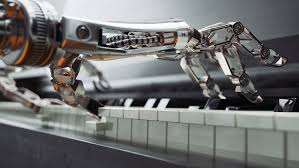
- Give examples of silence
- Reduce speed of info being sent to your interface
- Find new sounds while you play
- Limit the update of the feature/freeze some of the sounds
- Start with large range of sound in wide training set
- Can change model/training basis WHILE you are performing
- THE LADY’S GLOVE
- Accelerometer, pressure, sonar, switch, light, mapping!
- Mapping the gesture to the sound is the most important part of making the instrument
- Consider the facts:
- When you move one finger, your other fingers SHIFT ALSO!
- Don’t be afraid to do stuff faster with easier relations, mapping something like a glove is a one-goal project that’s super tedious & precious
- If what you’re doing excite you, that will be conveyed
- “We are not interested in perfect”
- Be a risk taker, be flexible, allow for varying degrees/levels of interaction to play with your instrument
- Plan:
- This is a set of information I want to use to control my instrument
- This is how I want my instrument to behave
- Actually I’m gonna change this
- Organic process with FAST experimentation and adaptation to different users
- The surprise of using a machine learning instrument should be an essential aspect that feeds into the excitement of using it
- The biggest strength of using machine learning vs programming in the creation of instruments is that it is freeing and fast so don’t be afraid to make SO MANY things! Focus on quantity over quality at first and you will be amazed at the interesting ideas that you come upon:)